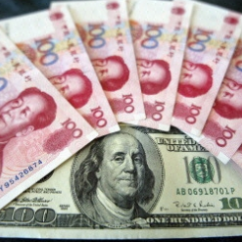Articles and News
CURRENCY CONUNDRUM: IF CHINA FLOATS THE YUAN, WILL IT HURT JEWELRY SALES? October 05, 2011 (0 comments)

Washington, DC—With the U.S. Congress debating whether or not to try and force China to revaluate its currency through punitive legislation here, makers of apparel and other categories of consumer goods are anxiously watching and worrying about a trade war.
For more than a decade, global economists and government officials have accused China of keeping the value of its currency, the renminbi, or yuan, artificially low in order to keep the cost of Chinese-made goods down. The U.S. has been pushing China to revaluate its currency to be more reflective of world markets, a move the Chinese have been resisting. They’ve relented slightly: starting in June 2010 the yuan began floating up gradually and gained about 5% in value within a year. But it’s still not floating free, and any efforts on the U.S. part to force it to are likely to result in equally punitive actions by the Chinese toward U.S. exports, resulting in a trade war potentially harmful to consumers.
With China playing in increasingly large role in the global jewelry market, does this spitting contest matter to U.S. retail jewelers?
A little, but not too much, says Russell Shor, senior industry analyst at GIA. He told The Centurion it could drive up the price of some Chinese-made goods, but says that overall, the price of gold and diamonds will have far more impact on jewelers’ open-to-buy than whether or not the yuan floats. Floating the yuan could drive some demand for diamonds and gold there, as a higher value means more buying power for both, which are typically traded in U.S. dollars. But at least in the short term, a floating yuan should not have major impact on jewelry, especially luxury jewelry, at the counter.
Jewelry-industry financial analyst Ken Gassman says he isn't working Chinese currency fluctuation into any of his forecasts at present.
For further reading, see this article in Women’s Wear Daily (subscription may be required), this editorial in the New York Times, or this reference article that explains the history and economics of the yuan, also from the New York Times.







